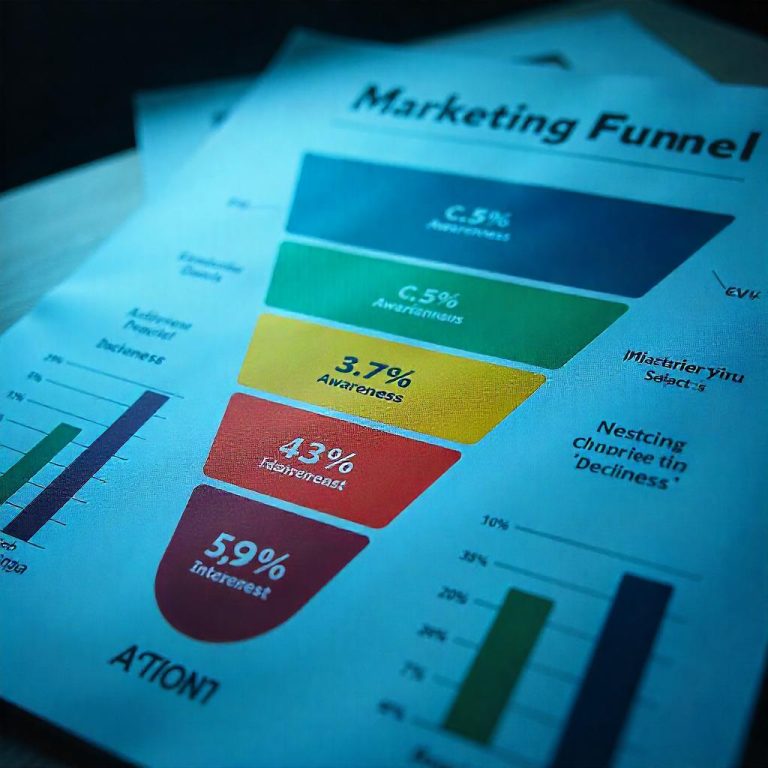How To Use Analytics In Marketing
Analytics plays an essential role in modern marketing, providing insights that allow marketers to make data-driven decisions, tailor strategies, and achieve better results. Through tracking and analyzing key metrics, marketers can understand customer behaviors, optimize campaigns, and increase return on investment (ROI). Here’s a guide on how to effectively use analytics in marketing and leverage the data for impactful strategies.
Unlock the Secrets to Starting a Successful Career in Digital Marketing!
1. Setting Clear Goals and KPIs
- Define Marketing Objectives: Identify what you want to achieve through your marketing efforts. Objectives might include increasing brand awareness, generating leads, boosting sales, or improving customer engagement.
- Establish Key Performance Indicators (KPIs): KPIs are measurable values that align with your goals, like conversion rates, click-through rates (CTR), customer acquisition costs (CAC), and return on ad spend (ROAS). Clear KPIs help monitor progress and gauge success.
2. Identifying Target Audience Insights
- Demographics Analysis: Use analytics to break down audience demographics, such as age, location, gender, and interests. Tools like Google Analytics and social media insights provide data on who engages with your content.
- Behavioral Data: Analyzing behavior (like browsing habits, time spent on site, and bounce rates) reveals what content or products resonate with specific audience segments. This helps refine targeting and personalization strategies.
3. Tracking Website Performance with Google Analytics
- Monitor Traffic Sources: Google Analytics shows where your website traffic originates, whether from search engines, social media, email, or referral websites. This insight helps allocate resources to high-performing channels.
- Analyze User Flow and Navigation Paths: User flow reports reveal how visitors move through your site, helping identify pages where users drop off or become more engaged.
- Track Conversions and Goals: Conversion tracking measures how many users complete specific actions, such as making a purchase or signing up for a newsletter. Set up goal tracking in Google Analytics to measure performance across different parts of the funnel.
4. Leveraging Social Media Analytics
- Platform-Specific Insights: Each social media platform provides built-in analytics that reveals follower growth, engagement rates, and reach. Tools like Facebook Insights, Twitter Analytics, and Instagram Insights offer detailed metrics for content performance.
- Content Performance: Social media analytics show which posts, ads, or stories generate the most likes, shares, comments, and clicks. Analyzing this data helps refine your content strategy by highlighting topics or formats that resonate with your audience.
- Audience Sentiment Analysis: Some platforms offer sentiment analysis, which gauges the tone of customer interactions (positive, negative, or neutral). Understanding sentiment around your brand, products, or industry helps shape content and engagement strategies.
Unlock the Secrets to Going Viral on Social Media and Making Money in Just 12 Days!
5. Optimizing Email Marketing with Analytics
- Email Open Rates and Click-Through Rates (CTR): Monitoring open rates reveals how compelling your subject lines are, while CTR shows how engaging your email content is. Experiment with A/B testing to find what improves these metrics.
- Unsubscribes and Bounce Rates: Track unsubscribes to gauge if your content remains relevant, and monitor bounce rates to maintain a healthy email list. High bounce rates may indicate poor list quality or outdated contact information.
- Conversions and Revenue Tracking: Measure conversions from email campaigns to assess revenue generation. Tools like Google Analytics and email marketing platforms offer insights into how emails drive traffic, leads, and sales.
6. Using PPC Analytics for Ad Performance
- Track Click-Through Rates (CTR) and Cost Per Click (CPC): CTR reflects how well your ad resonates with the audience, while CPC shows how much you’re spending per click. High CTRs with lower CPCs indicate cost-effective ad performance.
- Quality Score (Google Ads): In Google Ads, Quality Score measures ad relevance, keywords, and landing page quality. Higher scores improve ad placements and lower costs, making your campaign more efficient.
- Conversion Tracking and ROAS: Conversion tracking reveals which ads drive desired actions (e.g., sales or sign-ups). Calculate ROAS (Return on Ad Spend) to assess whether the revenue generated from an ad justifies the spending.
7. Measuring Content Marketing Success
- Engagement Metrics: Monitor metrics like average time on page, bounce rates, and social shares to gauge content engagement. High engagement rates suggest the content is valuable to your audience.
- SEO Performance: Use analytics to assess organic search traffic, keyword rankings, and backlinks to your content. Improving SEO can increase visibility and drive more traffic over time.
- Lead Generation and Conversion Rates: Track how well content drives leads or conversions. For instance, downloadable content like eBooks or whitepapers can generate leads, which can then be tracked through form submissions and further engagement.
8. A/B Testing and Experimentation
- A/B Testing Variants: A/B testing lets you experiment with variations of ads, landing pages, emails, or website elements to see which version performs better. Testing small changes (e.g., headline, CTA, image) helps refine campaigns.
- Analyze Test Results: After running tests, analyze the results to identify which version delivers better results. Continuous A/B testing provides insights for ongoing optimization of all marketing materials.
Learn How To Earn Money With Affiliate Marketing
9. Improving Customer Retention with CRM Analytics
- Track Customer Behavior: Use customer relationship management (CRM) tools to track individual customer interactions, purchase history, and engagement frequency. This helps identify high-value customers and their preferences.
- Segmentation and Targeted Campaigns: Segment your customer base based on behavior and demographics, then target each segment with tailored campaigns. For example, send loyalty discounts to repeat customers or re-engagement emails to inactive ones.
- Customer Lifetime Value (CLV): Calculate CLV to determine the long-term profitability of customers. Knowing which segments generate the highest CLV can guide marketing spend and strategies for retention.
10. Monitoring and Reporting with Dashboards
- Build Comprehensive Dashboards: Create dashboards to visualize data in real-time. Popular tools like Google Data Studio, Tableau, and HubSpot provide customizable dashboards for tracking KPIs across all marketing channels.
- Automate Regular Reports: Set up automated reports to track progress on a daily, weekly, or monthly basis. Regular reporting keeps the team aligned on performance and helps quickly identify areas needing improvement.
- Use Insights to Guide Strategy: Regularly review analytics insights to adjust campaigns. If a specific channel is underperforming, consider reallocating resources to higher-performing areas.
11. Utilizing Predictive Analytics for Future Trends
- Forecasting Models: Predictive analytics uses historical data and machine learning to forecast future customer behavior, such as which products may gain traction or how seasonal demand could shift.
- Behavioral Patterns: By analyzing past behavior, predictive models can identify patterns and help target customers with content and products they’re likely to engage with.
- Anticipate Customer Needs: Predictive analytics helps personalize experiences by anticipating customer needs based on their preferences, browsing history, and past purchases.
Learn How To Boost Your Sales Online
12. Adapting Analytics to Real-Time Marketing
- Real-Time Data Tracking: Real-time analytics can provide live data on visitor interactions, allowing for immediate adjustments to marketing strategies, ad budgets, or content.
- Responsive Marketing Efforts: For instance, if a campaign sees an unexpected surge in traffic, marketers can amplify it by increasing ad budgets or sending follow-up messages to capitalize on momentum.
- Addressing Customer Feedback Immediately: Real-time feedback allows businesses to respond to customer issues, complaints, or questions quickly, enhancing customer satisfaction.







